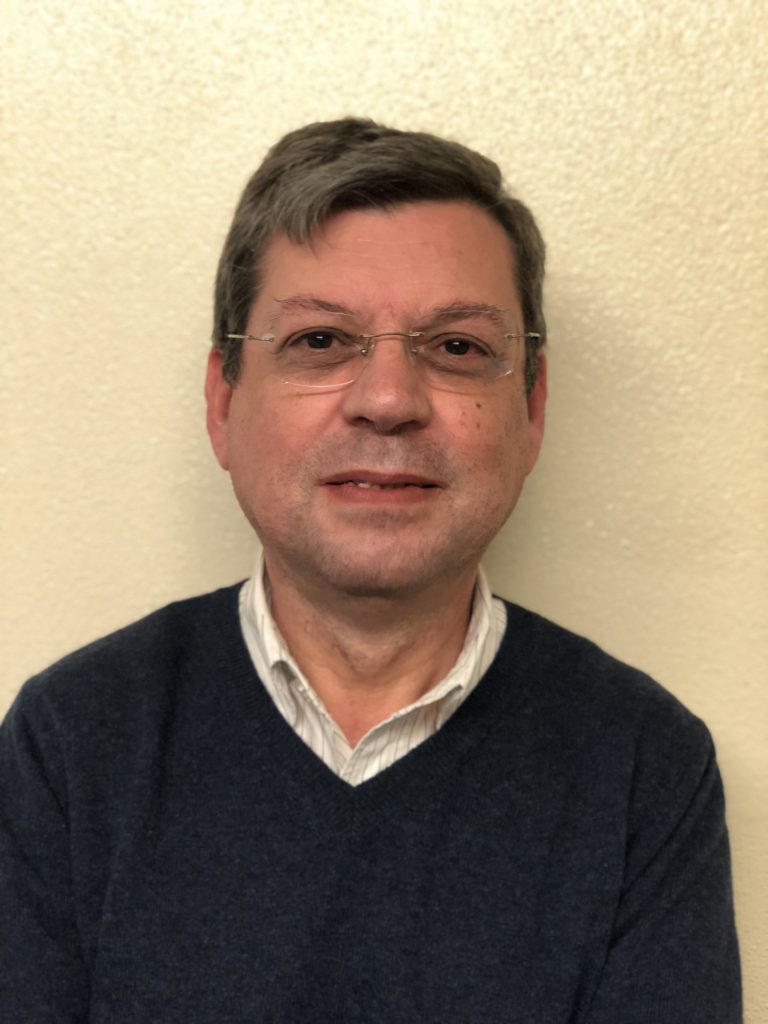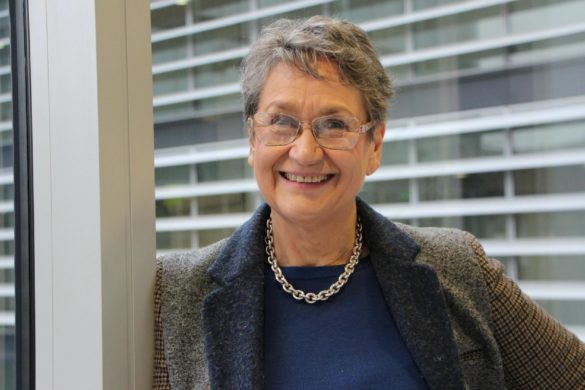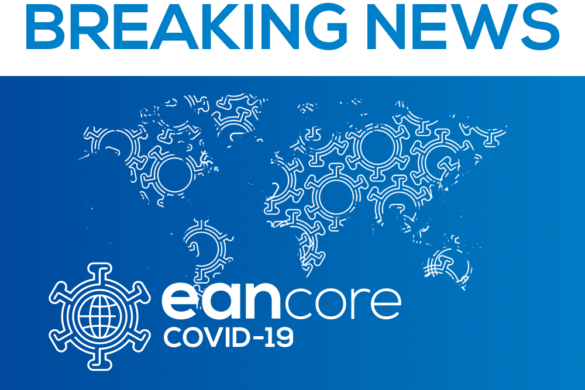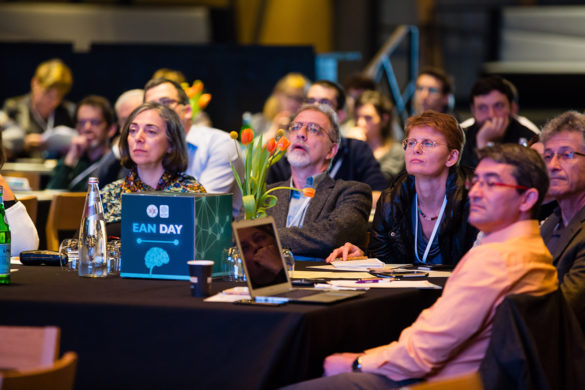Prof. Manuel Correia, President of the Portuguese National Neurological Society
Prof. Elena Moro (EM): Dear Prof Correia, could you briefly summarize for the EANpages readers the history of the Portuguese National Neurological Society, and its major achievements at national level?
Prof. Manuel Correia (MC): The first neuroscientific society in Portugal was founded in 1948, and it was named the “Sociedade Portuguesa de Oto-Neuro-Oftalmologia. The first century of Ophtalmoscopy was celebrated in Lisbon on the 26th of April 1952.
The Portuguese Society of Neurology and Psychiatry was founded in April 1949. Its main purpose was “To promote the knowledge of Neurology and Psychiatry including activities in the fields of Neurosurgery, Forensic Psychiatry, Mental Health, Medical Psychology and Child Psychiatry among its members”. At its inaugural session (January, 20th 1950), Professor Egas Moniz gave a lecture on “Neurological Concepts in Psychiatry”. The 25th anniversary of the first cerebral angiography was celebrated on January 28th 1951, with the presence of Egas Moniz as Honorary President of the Society. In August 1953, the Society organized in Lisbon the 5th International Congress of Neurology.
In 1979 the two “chapters”, Neurology and Psychiatry, due the specificity of their fields, decided to constitute autonomous societies: the Portuguese Society of Neurology and the Portuguese Society of Psychiatry.
The Portuguese Society of Neurology sponsored the 4th Congress of the EFNS (Lisbon, 1999) and the 21st Meeting of the ENS (Lisbon, 2011). The Portuguese Society of Neurology will coach the 4th Congress of the European Academy of Neurology in Lisbon this year in June.
The Portuguese Society of Neurology is committed with:
- The promotion, investigation and dissemination of knowledge in the field of neurological science;
- The promotion and development of Neurology in the service of the Portuguese population through encouragement of education and scientific research, the exchange and dissemination of scientific knowledge and the promotion of better health care and assistance to citizens with neurological diseases;
- The cooperation with similar national and foreign organizations, possibly establishing agreements with similar scientific societies. “
The Portuguese Society of Neurology has as guiding principles:
- To improve communication with partners and with civil society in general;
- To increase the participation of the members (including interns and young neurologists) in the Portuguese Society of Neurology;
- To create a position of influence with political decision-making centers, whose actions the Portuguese Society of Neurology will try to influence, in order to defend the best interests of the patients;
- To exercise one of the main roles of the SPN: the scientific training of its members;
- To promote better health care and assistance to citizens with neurological diseases.
Over the years, the Portuguese Society of Neurology has been modernized and Professor José Pereira Monteiro has played a relevant role. The Portuguese Society of Neurology assumes a very important role in the training of young neurologists, including the granting of scholarships for internships and influencing policy makers. It promotes dialogue with other areas of health and has more and more relations with other National and International Scientific Societies. It is governed by ethical standards in its relationship with Industry, with benefits for all. It promotes the broad debate of neurology in society, choosing comprehensive themes, such as the theme of the last Congress of Neurology: Climate Change, Environment, Globalization and Neurology.
It has a periodical publication, the Synapse (ISSN: 1645-281X), being the official organ of several scientific societies of the neurosciences area. Visit the website of the Portuguese Society of Neurology at www.spneurologia.com
EM: Portugal counts many famous scientists in the field of medicine and neurology in the present as well as in the past. Who in particular would you like to bring to the attention of the European neurologists?
MC: I will name two past doctors: Petri Hispani, or John XXI, and Amato Lusitano. Petri Hispani has been the only Pope to practice medicine. Born in Lisbon in 1210, he died in Viterbo in 1277. A man of wide learning and culture, he devoted himself to philosophy, theology, physics and medicine. Due to his work “Summulae Logicales” he was immortalized in “Canto XII” of Dante’s “Paradiso”. His most important medical works are “De Oculus”, “Thesaurus Pauperum” and “Liber de Conservanda Sanitale” (in Pedro Hispano Thesaurus Pauperum, Heatbrain, Consultores em Comunicação, Lda. ISBN: 978-972-99642-6-8). Amato Lusitano, born in Castelo Branco in 1511, student in Salamanca, he revealed himself to be an attentive and scrupulous observer, enchanted by mingling with high-key masters, thirsting for knowledge. He wrote seven volumes: “As Centúrias de Curas Medicinais “. Amato Lusitano, a Jew, forced to leave the country because of religious intolerance, which raged at the time, traveled through several European cities. In Genoa, together with Canano, he discovered the valves of the azygos vein. Moving constantly, his pilgrimage ended in Thessaloniki, where he finished writing “As Centúrias”. He died on January 21, 1568, victim of the plague he had helped thwart (Francisco Pinto, Histórias das Neurociências em Portugal, Lisbon 2012).
I will now mention some neurologists, and this reference is limited to neurology and not to medicine in general, of the twentieth and twenty-first centuries, who for many reasons influenced the neurosciences in Portugal and some of them in the world. It is a personal vision, and of course I have to apologize to many who are not here, as well as many other young scientists. Being my personal vision, some of them are not known internationally but certainly recognized by Portuguese neurologists. One characteristic of many of them was that they were closely related to the neurology centers and European neurologists of their time.
Egas Moniz (1874-1955) was a Portuguese neurologist whose name is associated to the invention of angiography and the first steps of psychosurgery. In July, 1927 he presented the first cerebral angiography at the “Société de Neurologie” in France. It was the case of a patient with a pituitary tumor. He won the Nobel Prize of Medicine for his work on pre-frontal leucotomy.
Almeida Lima (1903-1985), collaborator of Egas Moniz, described the radiographic aspects of internal carotid artery obstruction.
António Flores (1883-1941) was born in Castelo de Vide in 1883. He worked with Egas Moniz and with the most notable neurologists and neuropathologists in Europe. An excellent semiologist recognized by all Portuguese neurologists. A prize took his name at the Portuguese Society of Neurology
João Cid dos Santos (Lisbon 1907-1975) was a Portuguese surgeon devoted to Vascular Surgery. Following the pioneer work of Egas Moniz and inspired by the work of his father Reynaldo dos Santos also a surgeon and professor at the University of Lisbon, School of Medicine who performed the first aortography by injecting directly the abdominal aorta, he devoted to vascular surgery and angiography performing the first phlebography in humans in 1933. In 1946, he removed a thrombus and the atherosclerotic plaque from a near occluded superficial femoral artery by removing the endothelium. This audacious procedure had never been performed before due the risk of a secondary thrombus formation but he trusted in a new drug: heparin and was well succeeded. This procedure named thereafter “endarterectomy” has been used in other vascular beds such as aorta and carotid artery that was first performed by DeBakey in 1954.
Miller Guerra (1912-1993) was born in Vila-Flor with ample culture and interests. He was also known for his dedication to neurological semiology.
João Alfredo Lobo Antunes (1915-2004) was born in Lisbon, recognized by neuropathologists with special dedication to brain tumors and amyloid polyneuropathy.
Elysio de Moura (1887-1977) graduated in mathematics and philosophy and later in medicine, having established the first regency in Neurology at the University of Coimbra, followed by Nunes Vicente (1920-1987)
Corino de Andrdade (1906-2005), with the description of a peculiar form of polyneuropathy (amyloid) was the subject of a publication by Alastair Compston “Dorsal Column from the Archives. Brain 2015.138; 321-326. Lesser known but a basil neurologist throughout the investigation of Corino de Andrade was João Resende (1913-2003).
Orlando Leitão (1931-2014), with a prize in the Portuguese Society of Neurology who took his name, multifaceted in the scope of neurology and one of the initiators of neuropediatrics.
Carlos Garcia (1936-2004), multifaceted neurologist and author of a film about the neurological examination that still today is used for teaching.
João Lobo Antunes (1944-2016), neurocirurgião e sócio da Sociedade Portuguesa de Neurologia, deixou uma vasta obra científica e humanista
João Lobo Antunes (1944-2016), neurosurgeon and partner of the Portuguese Society of Neurology, left a vast scientific and humanistic work
Castro Lopes for his commitment to make cerebrovascular disease fundamental in the concerns of neurologists and the National Health Service.
Paula Coutinho with the investigation of the Machado-Joseph disease (type 3 spino-cerebellar ataxia). Bruno Carniatto Marques Garcia1 Francisco Manoel Branco Germiniani1 Paula Marques1 Jorge Sequeiros2 Hélio Afonso Ghizoni TeivePaula Coutinho’s outstanding contribution to the definition of Machado-Joseph disease Arq. Neuro-Psiquiatr. vol.75 no.10 São Paulo Oct. 2017http: //dx.doi.org/10.1590/0004-282×20170127
Catarina Resende Oliveira with her contribution to the development of neurochemistry in Portugal, and António Guimarães for keeping neuropathology alive.
António Damásio, a well-known neuroscientist, is Professor of Neuroscience, University of Southern California Director of the Brain and Creativity Institute. Latest Book: The Strange Order of Things: Life, Feeling, and the Making of Cultures, Pantheon, 2018.
José Ferro, professor of Neurology at the Faculty of Medicine of the University of Lisbon is for all an example of a clinical neuroscientist.
EM: Hosting the EAN Congress is a very important event. How will this affect the work of your national neurological society?
MC: The commitment of the Portuguese Society of Neurology, and of the Portuguese neurologists, at the 4th EAN congress is enormous. The general theme of the congress (“Neurogenetics, Unravelling hidden diseases”) fits in with the Portuguese spirit that comes from the Discoveries. We want everyone to discover Portugal and Portuguese neurology. The spring meeting of the SPN, dedicated to the training of residents of neurology, is this year replaced by the 4th EAN congress, with many good courses.
EM: What is your vision of the future of European Neurology?
MC: In two words: very good. We have many committed young people as well as seniors. Technological innovation opens up new possibilities for research and understanding of the healthy and diseased nervous system, enhances understanding of the geography and time of neurological diseases, and helps medical training in different countries and regions of the globe. Neurology remains, along with technological innovation, a discipline in which clinical history and semiology form the basis of diagnosis, and thus makes the person in the center.
Neurology is the nucleus of neurosciences, which are comprehensive in the world of knowledge. Neurology should increasingly interconnect with other sciences or human expressions, such as environmental sciences, architecture, and also have a political role in the broadest sense of politics.
EM: Thank you for this interesting interview. See you in Lisbon!
Elena Moro – EAN Pages Editor-in-chief












